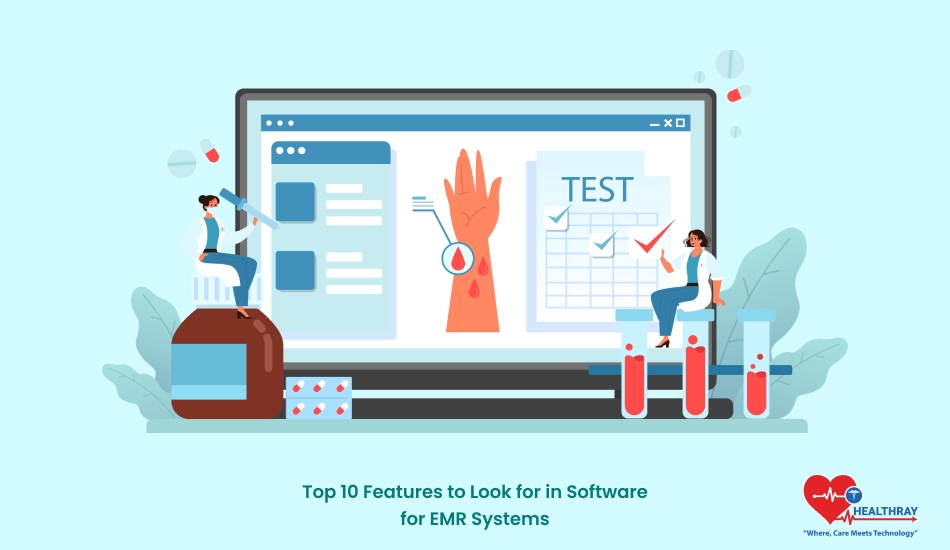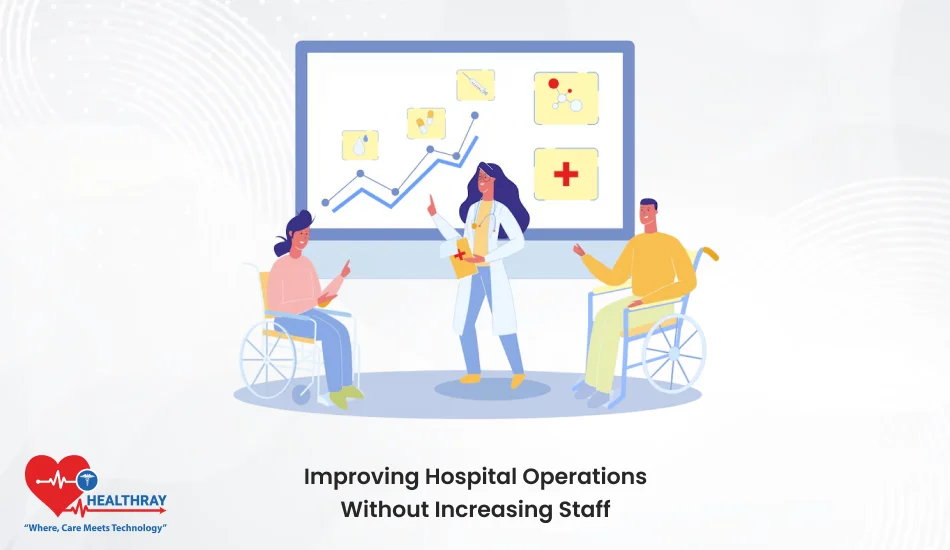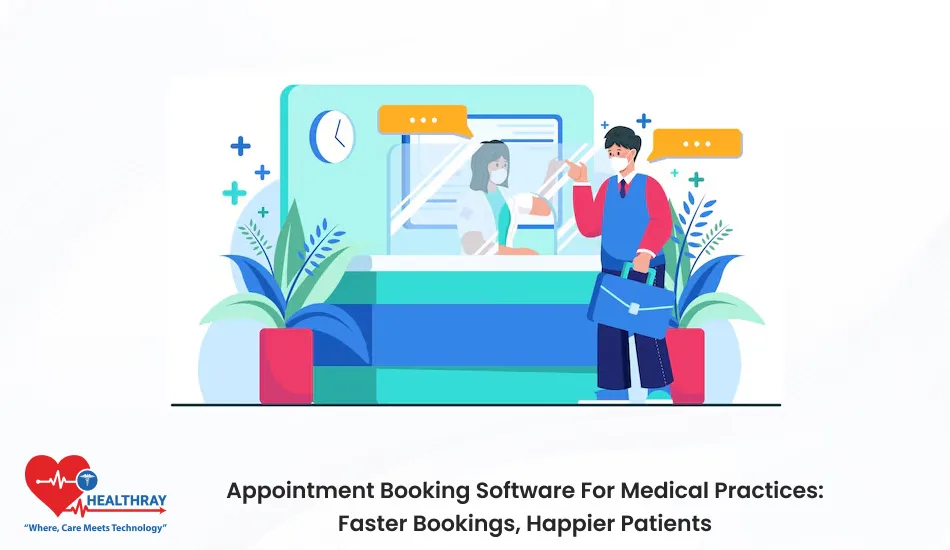An Electronic Medical Record (EMR) system is a key resource in contemporary medicine. It helps doctors and hospitals manage patient records, ensure smooth communication between departments, and maintain compliance with industry standards. With patient care becoming more data-driven and complex, having the right EMR system in place can make all the difference. But not all systems are created equal. The following are the ten factors that every health care facility should consider when selecting an EMR software.
Top Features for EMR Systems

User-Friendly Interface
A workable EMR system requires simple and well understood user-interface. If the interface is too complicated or poorly designed, it can lead to confusion, errors, and slower processes. This is especially important for busy healthcare professionals like doctors, nurses, and administrative staff.
The interface will make things easier, for example, when entering patient data, viewing medical data, or managing appointments. Features such as drag-and-drop or voice-command can increase efficiency by sparing time and labor. If performing simple tasks takes too long, doctors may spend more time interacting with the system rather than interacting with patients.
- Quick Navigation: Convenience to use commonly needed functions such as patients’ records or test results.
- Minimal Training Required: A system that does not require much training saves time and lessens error.
Customization Options
Each healthcare organization has its own needs and a black box system, which cannot be implemented everywhere, would not be suitable for everybody. Systems for EMR that provide the user with customization options are vastly more useful. For instance, a pediatric clinic may require the use of different templates than a cardiology ward.
An ideal EMR system will enable you to customize templates, forms, and workflows in a way that is suitable to your practice. Customisation should also apply to alerts for patient care, so that providers can have reminders for vaccinations, routine visits and follow-ups.
- Custom Charting Templates: Tailor forms based on medical specialties.
- Alerts and Reminders: Set personalized notifications to keep track of patient care.
Integration with Other Systems
Health care is dependent on one system of interconnected components. Your EMR software should integrate smoothly with other tools like lab systems, imaging software, billing, and telehealth platforms. This guarantees information flows automatically, without manual imputing, which minimizes errors and saves time.
For multispecialty hospitals, integration between departments—such as cardiology, radiology, and lab systems—streamlines patient care. Seamless relations between systems also enhance the diagnostic and treatment plan accuracy.
- Lab Integration: Automating the receiving of test results and their inclusion in patient records.
- Telehealth Integration: Enable virtual care with access to patient data during telemedicine visits.
Interoperability
Interoperability is the capability of EMR systems to exchange and use data among healthcare providers and institutions. This is critical when a patient consults with or transfers between multiple doctors and different hospitals. A fully interconnected system enables all healthcare providers to view a single record of a patient’s medical history.
This functionality is not only handy, but can forestall medical mistakes as well as guarantee disaggregated/continuous care. As soon as systems can be networked to communicate, this will decrease the amount of redundant testing and interventions for patients, leading to greater efficiency in care.
- Cross-Platform Compatibility: Ensure records can be shared with outside healthcare systems.
- Unified Patient Record: Store all patient information, from all providers, in one place.
Data Security and HIPAA Compliance
Security is a top concern for healthcare facilities. To guarantee the protection of confidential patient information, EMR systems often require compliance with stringent data security measures. This encompasses HIPAA (Health Insurance Portability and Accountability Act) regulations.
A secure EMR system shall have encryption, role based access control, and audit trail. These functionalities protect not only from data leaks but also that only the right persons are allowed to access particular patient data. Breaches can result in both civil liability and erosion of patient trust.
- Role-Based Access: Restrict access to a user’s role in the facility.
- Audit Trails: Track who accessed or edited specific records.
Mobile Access
Mobile access is no longer a luxury—it’s a necessity. Doctors and medical personnel are frequently walking and moving in the hospital or between sites. The ability to access EMR systems via mobile devices enables healthcare providers to review patient records, make updates, and enter notes even when they’re not at their desk.
Mobile functionality can also be crucial in emergency situations. Being able to pull up records quickly during a critical moment can make a huge difference in the care provided.
- On-the-Go Access: Grant staff the ability to access patient records remotely on tablets and/or phones.
- Secure Mobile Login: Mobiles access should be secured with, e.g., two-factor authentication.
E-Prescribing and Medication Management
Electronic prescribing (e-prescribing) is a capability that enables physicians to electronically transmit prescriptions to pharmacies. This is a benefit over the requirement for handwritten prescriptions, which is an invitation to error because of the handwriting being illegible or miscommunicated.
E-prescribing therefore leads to an increase in patient ease and leads to patients receiving medications more quickly and with fewer problems. Furthermore, an EMR Software Solution packages of medication management capabilities can also notify physicians of potential drug interactions and allergies, ultimately enhancing patient safety.
- Error Reduction: Minimize risks associated with handwritten prescriptions.
- Drug Interaction Alerts: Warn doctors about potential harmful interactions between prescribed medications.
Billing and Revenue Cycle Management
Billing and revenue management plays an important role for hospitals as well as private practices.
An EMR system with billing capabilities can optimize the entire revenue cycle. With the positive consequence of automa[tion of the many tedious tasks associated with claim submission, payment tracking and financial accounting), resulting in a much more simplified and lessened administrative workload.
It also ensures emergency bills for service and cash flow improvement, especially in multi specialty hospitals where billing complexity is high.
- Automated Claim Submission: Cut down on manual claim processes.
- Financial Reporting: Create reports to monitor revenue and past payments due.
Clinical Decision Support (CDS)
Clinical Decision Support (CDS) systems help decision makers in clinical practice make more informed decisions. These applications offer, on the one hand, evidence-based alerts and prompts within the framework of the patient-care flow, on the other hand. For example, CDS can alert a clinician for suspected drug interactions, recommend prophylaxis examinations, or provide recommendations based on the most recent clinical evidence.
This characteristic leads to better patient results because care decisions are evidence-based and are informed by best practices.
- Evidence-Based Alerts: Provide recommendations based on clinical guidelines.
- Preventive Care Reminders: Notify staff about routine screenings or vaccinations.
Patient Portal for Engagement
Patient portals are a valuable tool for promoting patient participation. Patients can access through a portal their medical records, the results of the tests realised, the renewal of the prescription drugs or even the appointments. Not only the patient’s quality of life is improved but also prevents the administrative workload of medical staff.
Patients more actively involved in the process of receiving care also show better health results. To open up transparency towards, and thereby ensure, communication between the HCP and the patient has a practical purpose.
- Appointment Scheduling: Patients can schedule or cancel appointments online.
- Access to Health Records: Allow patients to access and view their medical record and test results.
Conclusion
The right EMR system should therefore be chosen with regard to features that will enhance efficiency and patient care. From user-friendly interfaces to robust security, each of the ten features developed below shall be an essential step towards ensuring that healthcare providers focus on what matters most: excellent patient care.





